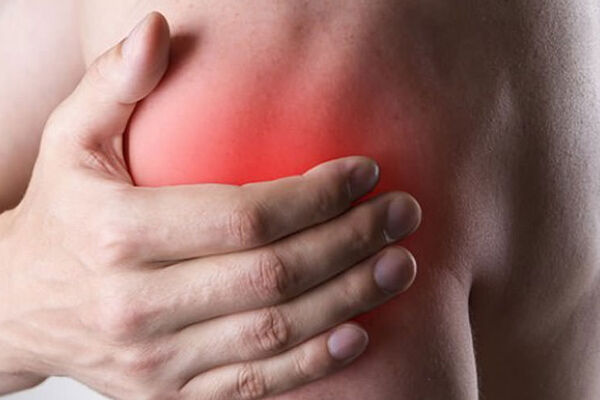Shoulder impingement syndrome is a painful affliction of the shoulder joint, which results from the collision of soft tissue structures and bony tissue. This syndrome is also known as “swimmer’s shoulder” or “pitcher’s shoulder”. Causes of the syndrome vary, depending on the type of physical activity and means of injury. The most common cause is overexertion of the shoulder muscles.
The anatomic description would be pressure between the shoulder rotator cuff muscles, and the coracoacromial arch. Causes include frequent and strong activity with outstretched arms. During such activities, there is often a thickening of shoulder muscle tendons that pressure surrounding structures. Inflammation of the subacromial bursa is a frequent consequence, and an additional problem.
Signs and symptoms: pain while resting, pain that increases with hand movement, limited mobility, in particular, internal rotation and horizontal adduction. A characteristic of patients suffering from shoulder impingement syndrome is pain while lifting the arm sideways between 60 and 130 degrees. Pain in the evenings is pronounced in the acute stage.
In order to bring about full recovery, it is necessary to diagnose the cause of the injury in a timely manner in order to prevent the condition progressing. An examination by a specialist of physical therapy can discover and diagnose this syndrome and begin the appropriate course of treatment. The early stage of treatment includes physical therapy in order to decrease inflammation, pain and swelling. Using High Intensity Laser Treatment (HILT) decreases pain symptoms after therapy. Combined with other treatment procedures, such as transcutaneous electrical nerve stimulation (TENS) and interferential current treatment (IFT), it is possible to stop all the negative processes in the shoulder joint region and restore its full function and mobility. Aside from techniques involving machines, a large part of the rehabilitation process involves the application of specialized manual techniques, such as the Mulligan technique and kinesio-taping , which can greatly contribute to both improving range of motion and alleviating pain.
Miloš Paunović
Chartered physiotherapist
Licensed Mulligan physiotherapist



